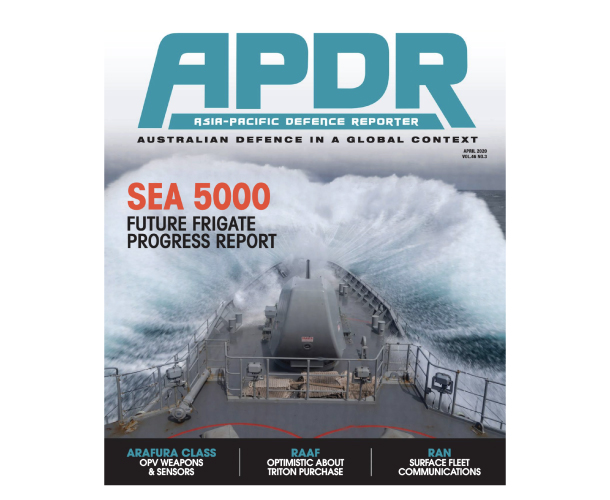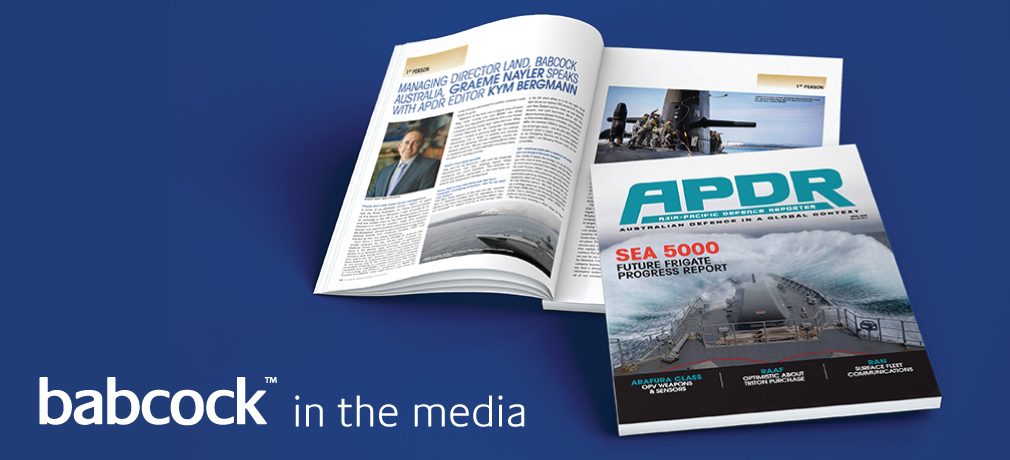Graeme Nayler, Managing Director of Land has recently gone one of one with APDR editor Kym Bergmann to discuss past, present and future of Babcock.
The following article was published in the Asia-Pacific Defence Reporter for their April 2020 edition (Vol.46 No.3). You can access the full issue here:
Please start with some career background.
In terms of my personal career, I spent 15 years with the Royal Australian Air Force predominantly on P-3 Orions as a Navigator. I was fortunate to do an exchange in the UK on an Aerosystems Course and was posted back to the Aircraft Research and Development Unitto conduct flight and systems testing. I was also fortunate to spend time on programs like Wedgetail, various weapon and technology trials, working closely with Defence, CASG, DST and industry so that was pretty rewarding.
From there, I returned to 92WG to support the IOT&E program for the AP-3C and finished my Defence career completing a number of operational tours in the Middle East, amongst others, before joining Nova Systems. Being one of the original team members and having limited business acumen at the time was a real eye opener. I spent eight years with Nova heading up business development and strategy for the group, but at the same time enjoyed being a consultant working on complex programs like AWD, Land400 and NAVWAR. I also worked on a number of interesting non-Defence programs for BHP, SA Tourism and AMSA. After eight years, I was ready for a sea change and looked for another company I could assist to grow.
Babcock at the time was a logical jump off point. They were turning just over $30M, very similar culture, very big growth ambitions, and a very honest customer delivery model that I value and trust. When I joined Babcock as the Corporate Development Director I looked at growing both top line revenue, diversifying into a range of markets and services, as well as growing internal capability around our delivery systems. We are now reaching $400 million in revenue and over 1,000 staff after only seven years. It’s been an exciting journey.
That’s very rapid growth.
Yes, and for my penance, I still hold the Corporate Development role (the strategy piece) whilst managing our Land business. This ensures our continued growth, particularly in the core areas of vehicle and equipment management.
Does that mean that Babcock has three separate managing directors – one for air, land and naval?
We have three sectors in line with the UK however due to different markets and the operations in New Zealand we have five managing directors (MDs). We are fortunate to report directly to the Group CEO in the UK which allows us to be very agile. David Ruff sits as our regional CEO across both Australia and New Zealand and from there, we have Marine, Aviation, and Land businesses. We’ve split the Marine business between Australia and New Zealand so there are two MDs there. In Aviation, we’ve got two MDs: one oversees ‘Offshore’ operations – largely in the oil and gas sector – and the other MD oversees ‘Onshore’ which is largely special mission support to our Emergency Services and Australian Border Force (ABF). I am Managing Director Land, as one of five MDs.
OK – could you start with a summary of what you are doing in the Land domain?
Yes, initially I’ll explain the strategy. I am an Air Force guy who used to work predominately with the Navy, so Land was an area that I have had to grow into over the past 10 years. When I was working for Nova, the sustainment side in the Land sector was fairly mature, particularly with Army, however most major fleets and equipment didn’t fall into the OEM domain like the Air and Maritime sectors. We really wanted to set up a strategy where we weren’t going head-to-head with large OEMs who, under the previous acquisition model, had a dominant position within CASG for platforms like the Armoured fleet.
We have been pursuing a whole range of Fleet and Equipment opportunities where we can utilise our highly centralised asset management systems to better manage life of type in partnership with CASG and Defence. In the UK, Babcock does most of the UK MoD’s sustainment work – about 90% of Land contracts, about 80% of Marine, and 40% of Aviation.
Here in Australia, our pedigree was on the marine side with the Collins Class submarine and ANZAC frigate sustainment through our joint venture, Naval Ship Management. Initially we found it a hard to compete with some of the large OEMs so we started to target legacy equipment fleets.
Going forward we are focussed on a range of new projects like deployable infrastructure and fuel systems. All of these fall back neatly into our delivery model that we have developed over the better part of six years. This is ideally suited to highly centralised, secure and scalable systems; we saw a gap within that market. Most people were going contract to contract. For us, we have the same delivery model that we use for our commercial customers that we do for Defence: I have centralised procurement people, category buyers, engineers and technical officers; we have a strong competitive advantage given the information systems we are able to deploy across all of our contracts. The key difference between Babcock as a service company, and not an OEM, is that we generate profit through driving cost-efficiency with our customer, whereas an OEM makes its profits through selling more product and spares.
I’m not very familiar with your business model – so how does that apply to the Special Forces helicopter procurement, LAND 2097 Phase 4?
We are pursuing Land2097 because it’s a logical pivot into Defence aviation for us, given the opportunity. Land2097 is an acquisition/sustainment contract for a COTS platform, as this is not OEM dominated – like the Joint Strike Fighter – it really lends itself to our experience in delivering similar contracts globally. For LAND 2097, the helicopter is probably only 50% of the capability. With the customer being Special Operations, you must meet their tight availability requirements and be agile. Babcock operates over 400 aircraft globally and 80% of those are helicopters. Outside of Defence, Babcock is one of the biggest customers for the various helicopter OEMs.
If you look at Land 2097, we actually operate all four aircraft types that have been notionally competing. So, working with CASG’s requirements, our model is to evaluate the holistic solution essentially, and apply an independent assessment against the potential aircraft. We’ve been going through our own tender process across various aircraft types. Applying an independent management contracting model is the centrepiece of our proposal.
A big plus for us in terms of the operating model is we are already doing this successfully. We already work for a range of organisations, particularly the police, who work in counter-terrorism so we’ve already got a strong affinity with those conducting these types of operations. It is no surprise that a significant number of our Aviation staff come from Defence. We have a fleet of over 30 aircraft in Australia supporting State Government agencies including police and ABF. This is very different from the typical OEM model that just delivers an aircraft. It requires industry to be able to work in close partnership with the end-user customer to be able to develop the capability through spiral innovation in a dynamically changing environment.
Due to the notice-to-move periods required for counter terrorism operations – we’re talking hours not months – you need an organisation like Babcock that is recognised for partnering and is less about rigid contracting. We are very agile and we’re used to working at pace. A good example is mobilisation of the LHDs over Christmas to support Operation Bushfire Assist. We had no issues in recalling all our staff to support a national imperative as this is part of Babcock’s DNA.
I wasn’t aware of that. Did you have to get the LHDs up and running in a few days?
Yes, that’s correct. One vessel was already going through a maintenance period and essentially, at short notice, we had to get both vessels back to operational readiness. It was a success story for both CASG and NSM in supporting Navy, achieving their operational readiness.
Going back to Land 2097. Will you be selecting a platform and recommending it?
Yes. In early discussions with CASG before the tender came out, our preference was initially for the selection of a Managing Contractor and the selection of a platform in partnership with CASG. Essentially, where they landed was an Acquisition/Sustainment contract which does require us to select a preferred aircraft. We’re almost at the end of that process now. It would be no surprise to most who are close to this, that there are probably two logical aircraft. We already operate both extensively, noting one is probably a better transport/training aircraft and the other is more suited to specialist operational use. Again, it really depends on how you look at the requirements. One aspect for us that we can’t ignore is how individual OEMs are performing on existing Defence contracts. That has to be part of our selection criteria. So, we’re very close to selecting the aircraft. We’re still debating whether we’ll include a second aircraft as an option, but at this stage, I anticipate there’ll be one aircraft that will stand out amongst the competition.
Now, I think you’ve already indicated a couple of reference sites with the South Australian police. Are you bidding for any other military users in special forces, reference customers that you can mention?
Yes. In addition to work carried out in Australia for ABF, State Government agencies, police and Emergency Services we work across the UK, Europe and Canada under similar special mission contracts. For us, it’s not just our scale but the experience we are able to bring to the opportunity.
I also see that you have been successful in New Zealand with a Defence communications contract. One doesn’t automatically think of Babcock as a communications company.
When we bought VT Group, going back ten years ago, Babcock bought their capabilities. In the UK, we manage not only the HF networks, but also satellite and VLF: communications similar to Defence’s operations at Harold E Holt. We also used to manage the broadcast communications network of the BBC World Service and we were a large second tier provider to most of the major telecommunications companies in the UK until we’ve consolidated our commercial contracts. For us, New Zealand was a strategic stepping stone to the Australian market to provide better value and capability for both countries.
In NZ, our model was tested in open competition against large OEMs and we ultimately won. We are planning to apply the model to Australia but certainly for us, it’s around joining up the Five Eyes user community to provide global interoperability and resilience.
As I mentioned earlier, our strategy is picking the right opportunities. There really isn’t an dominant OEM that covers 50% of the technology in HF communications. We have been managing HF for over 20 years, particularly in the UK. As a service provider, our advantage is that once you get past acquisition, our ability to drive out costs and increase availability is our core business, unlike an OEM.
Just very generally, it looks to be a pretty crowded field. From the military comms domain, you have Boeing, BAE Systems, Thales, Raytheon and of course L3 Harris. Can you go through the logic of why you think that you have an advantage when there are so many incumbents?
If we consider the HF example, there aren’t many providers. There’s Boeing who have been incumbent for the better part of 15 years. In our case, HF communications is a capability that we offer globally, and we have the independence to select any equipment on the basis that it offers the best value for money for the Commonwealth. In contrast, the OEMs are tied to their own products. The other difference between us and OEMs is they spend all their time on product development and whereas we focus on efficiency. So, certainly in HF communications, there aren’t many competitors.
In the broader communications space, for instance JP 9102, we’re unlikely to compete in the satellite space because there are some very dominant OEMs that cover the breadth of satellite communications.
Any final thoughts?
Sure. We’ve been closely following CASG and Defence’s strategy and messaging around being a partner. One thing Babcock prides itself on is being very open and transparent. We win a high proportion of contracts on the basis that we are an easy company to deal with. We are not litigious. As we’ve shown with the LHDs during the bushfires, and the work we do with ADF GSE and CBRNE, we are highly responsive. We like to work very closely with our customers to give them the agility and ability to make changes to their capability without penalty.

The following article was published in the Asia-Pacific Defence Reporter for their April 2020 edition (Vol.46 No.3). You can access the full issue here:

